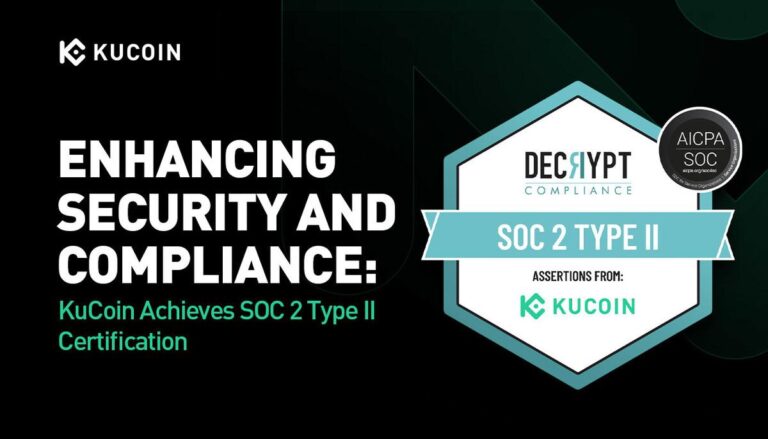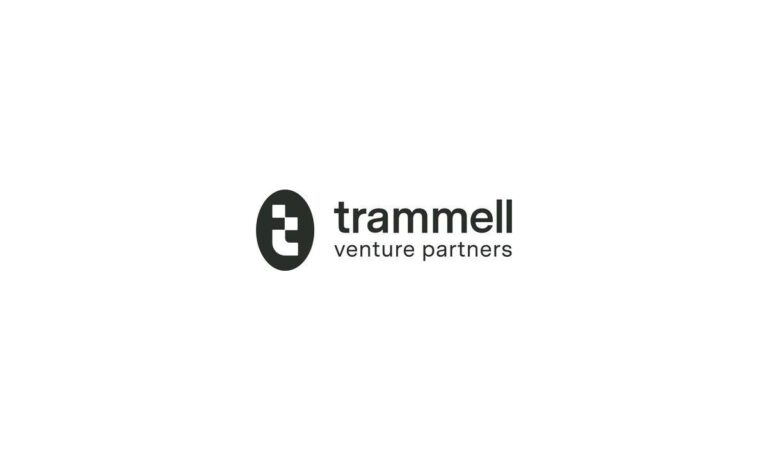EigenLayer Restaking Protocol on Ethereum
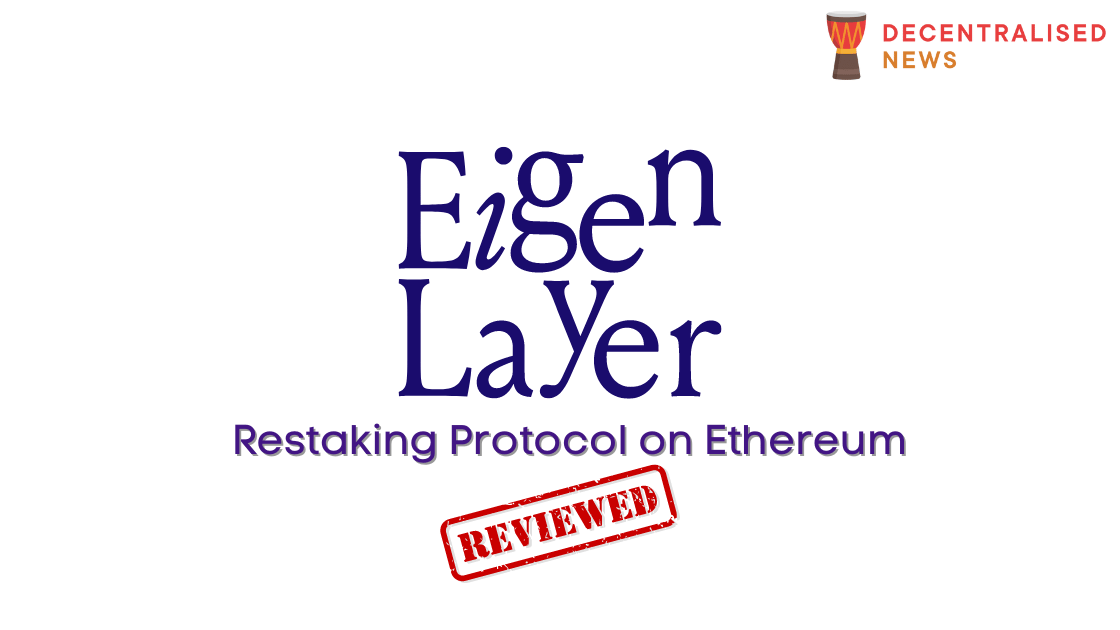
What is EigenLayer?
EigenLayer is a protocol developed on Ethereum, which brings forth restaking, an innovative concept in cryptoeconomic security. This concept allows for the utilization of ETH at the consensus level. Users who stake ETH natively or through a liquid staking token (LST) have the option to engage with EigenLayer smart contracts to restake their ETH or LST, thereby extending cryptoeconomic security to more applications on the network and earning extra rewards. Restaking is available for both natively staked ETH and liquid staked tokens like stETH, rETH, cbETH, and LsETH.
Through EigenLayer, Ethereum stakers can contribute to the security of numerous services by restaking their staked ETH and opting-in to multiple services concurrently, resulting in collective security. By repurposing ETH to secure various services, stakers experience reduced capital expenses for participation and a significant enhancement in trust assurances for individual services.
Developers of new decentralized services for Ethereum are typically required to establish a new trust network to safeguard their systems, which leads to fragmented security. EigenLayer addresses this issue by allowing any service, irrespective of its structure (e.g., EVM-compatibility), to access the shared security provided by Ethereum’s stakers, thus fostering an ecosystem for permissionless innovation and free-market governance.
EigenLayer Protocol Features

Tailored Decentralization
As time progresses, the number of native ETH restakers is anticipated to increase exponentially. EigenLayer enables native stakers to choose to secure services that demand high levels of decentralization, such as those only allowing native stakers to participate. Services that may prioritize decentralization include those that facilitate censorship resistance through multilateral ordering, secret sharing, and multi-party computation across numerous nodes.
To attract the maximum number of native Ethereum stakers, it is essential that services valuing decentralization maintain lightweight off-chain software container requirements. This ensures that stakers can partake with only a minimal increase in their infrastructure capabilities.
Customized Slashing
EigenLayer supplies cryptoeconomic security via a variety of slashing mechanisms, imposing a significant corruption cost. Slashing terms and conditions are specified in the slashing contract deployed by each service. By choosing to restake with a specific service, stakers acknowledge the risk of being subjected to slashing based on the rules within the slashing contract.

Restakers who opt into EigenLayer receive additional rewards on their staked ETH, while validators who participate earn extra revenue from services benefiting from their validation efforts. In the event of a dispute, EigenLayer employs the service’s slashing contract to determine if the staker acted maliciously before slashing the staker.

Operator Delegation
While some stakers may be interested in participating in EigenLayer, they may not want to manage software containers of services themselves. EigenLayer offers a solution for these stakers by allowing them to delegate EigenLayer tasks to operators who commit to running actively validated service software modules on their behalf.
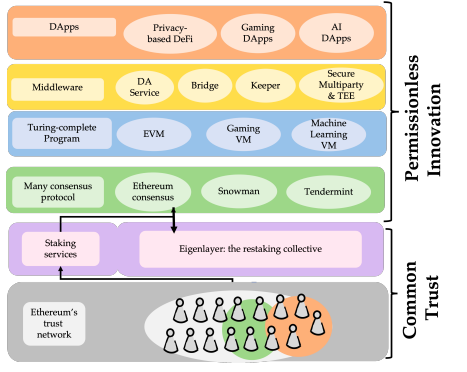
Stakers may decide to delegate to operators based on several factors:
- Operator trustworthiness: Stakers must conduct due diligence on operators before delegating their stake, as staker assets may be subject to slashing if their delegated operator fails to meet obligations within the services they participate in.
- Rewards: Stakers may delegate to operators providing the highest rewards on delegated stakes.
- Service preferences: Stakers might favor services based on personal interests, due diligence regarding slashing risks, or rewards, leading them to delegate their stake solely to operators opted into those specific services.
Stakers who prefer a trust-minimized approach always have the option to act as their own operator.
EigenLayer Protocol Testnet

It was announced that the release of the testnet for the first stage of the EigenLayer protocol, which supports liquid and native restaking was live. The recent launch of the Stage 1 testnet is based on the Ethereum Goerli network. It is important to note that this is an initial, non-incentivized testnet with actively developing code. Improvements are expected before the mainnet launch, and the team encourages feedback, comments, and suggestions from the community to help refine the platform.
EigenLayer’s architecture is founded on the fundamental concept of credible neutrality, which promotes intersubjectivity by enabling participants to make subjective choices rather than being subject to protocol decisions. As a result, the EigenLayer protocol allows services built on EigenLayer to select the restaking modalities they value and trust, including specifying whether to accept native restaking and/or liquid restaking for security, as well as determining which liquid staking tokens to accept.
The Stage 1 testnet accommodates the following restaking modalities:
Liquid Restaking
EigenLayer facilitates various liquid staking tokens to be restaked on its contracts. The testnet supports stETH and rETH as examples. Assets supported on the mainnet will be announced prior to the mainnet launch, based on community feedback.
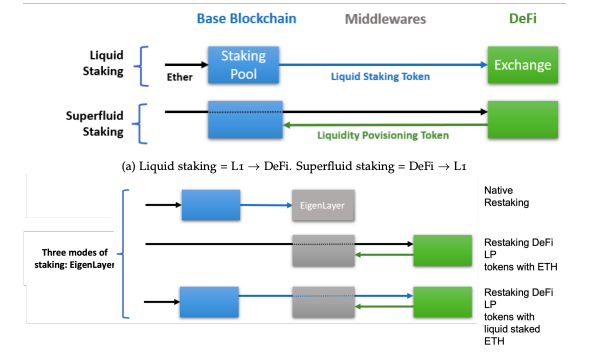
Native Restaking
- New ETH stakers: When creating new validators, they can set their withdrawal credentials to their personalized EigenLayer smart contract “pods.”
- Existing ETH stakers: The upcoming Shapella upgrade for Ethereum, scheduled on April 12, 2023, allows existing native stakers to participate in EigenLayer:
- Stakers with withdrawal credentials starting with 0x00 can redirect their withdrawal credentials to an execution layer address, such as their EigenLayer smart contract “pods,” after the upgrade is live. Exiting the beacon chain is not required.
- Stakers with withdrawal credentials starting with 0x01 can engage in EigenLayer by withdrawing from the beacon chain and depositing as a new validator after the upgrade is live. Currently, it is not possible to simply redirect withdrawal credentials for those with 0x01 credentials.
EigenLayer contracts are undergoing active audits, and a bug bounty program will be introduced following the completion of these audits. The code is licensed under a BSL license for two years, after which it will convert to an MIT license. The community is invited to share any comments about the codebase on the GitHub repository.
Safeguards
The initial EigenLayer design prioritizes caution and the security of user funds by implementing training wheels, which can be removed eventually. The EigenLayer contracts consist of two distinct multisigs: a team multisig controlling limited functionality, such as pausing and adding new restakable tokens; and a community multisig managing upgradability. For this testnet, both multisigs are operated by the early developers of the EigenLayer protocol.
How to Participate in the EigenLayer Protocol Testnet
Users intrigued by EigenLayer can acquaint themselves with the EigenLayer restaking module on the testnet and its related interfaces. Although the Stage 1 testnet primarily targets stakers, other ecosystem members, including operators and builders, can gain insights about EigenLayer and grasp the fundamental framework of the codebase. Moreover, the testnet allows teams developing staking features to explore diverse approaches for integrating EigenLayer restaking into their protocols.
To get started go to: https://goerli.eigenlayer.xyz/

- In case you don’t possess any Goerli ETH, utilize the faucet at http://goerlifaucet.com
- Visit https://testnet.rocketpool.net and connect your wallet to the Goerli Network.
- Enter a Goerli ETH amount (choose a small sum if gas prices are high) and click Stake. Confirm the transaction.
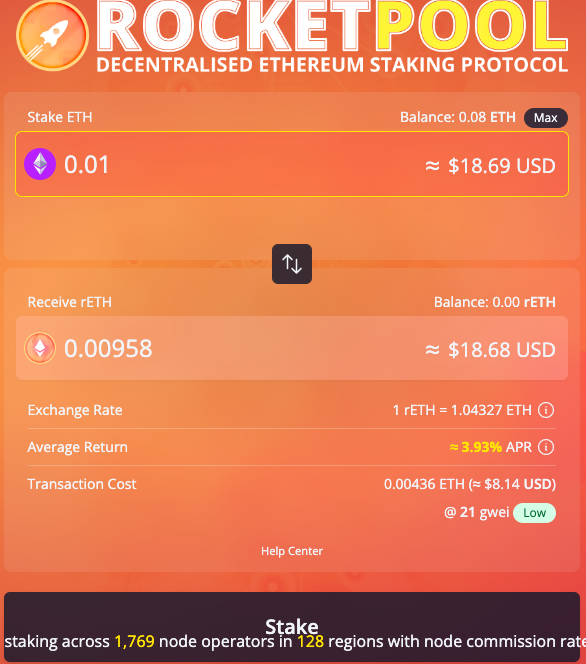
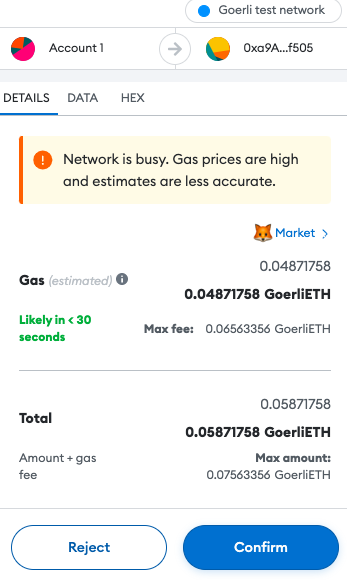
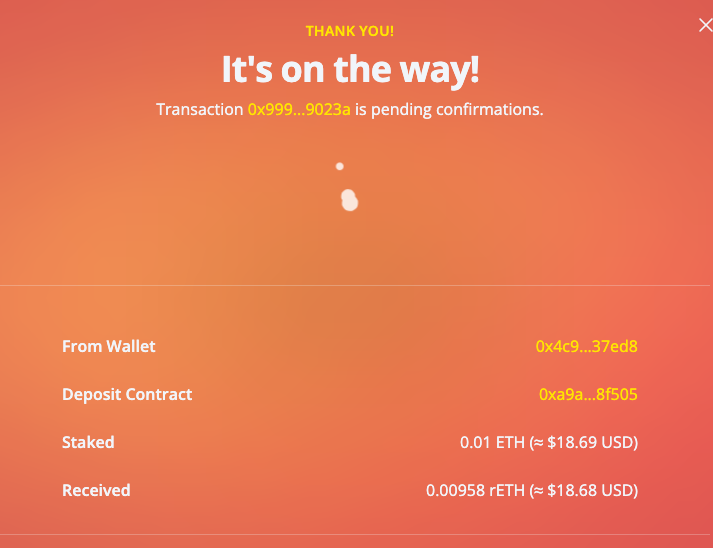
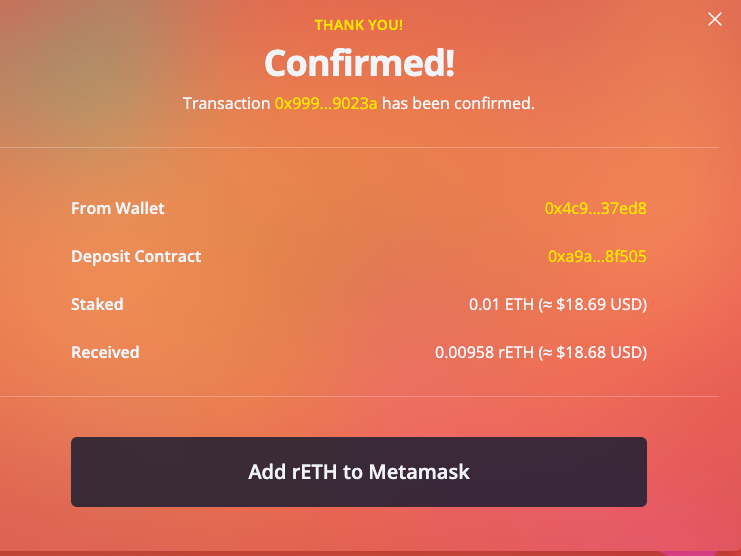
- Click Add rETH to Metamask and click add token.
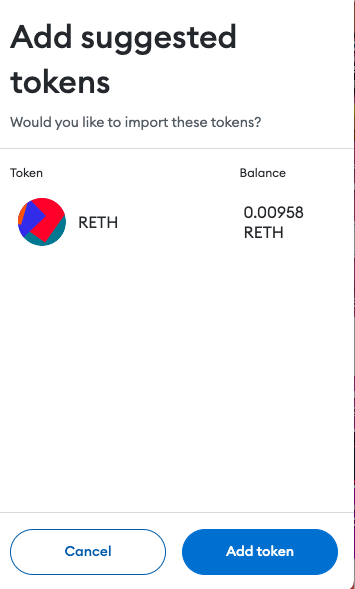
- Click on your MetaMask extension and select SEND.
- Input this address: 0x1643E812aE58766192Cf7D2Cf9567dF2C37e9B7F and click I understand.
- Specify the amount you wish to transfer and approve the transaction.
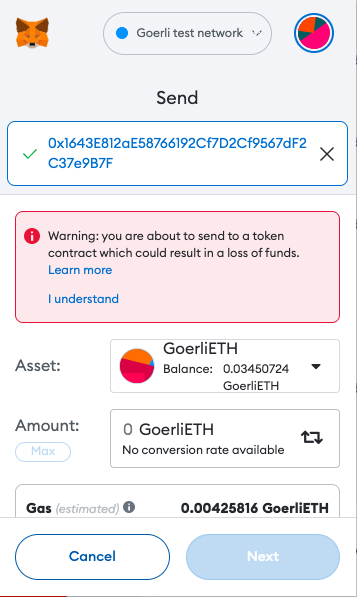
If you don’t have test tokens then go to https://goerlifaucet.com/
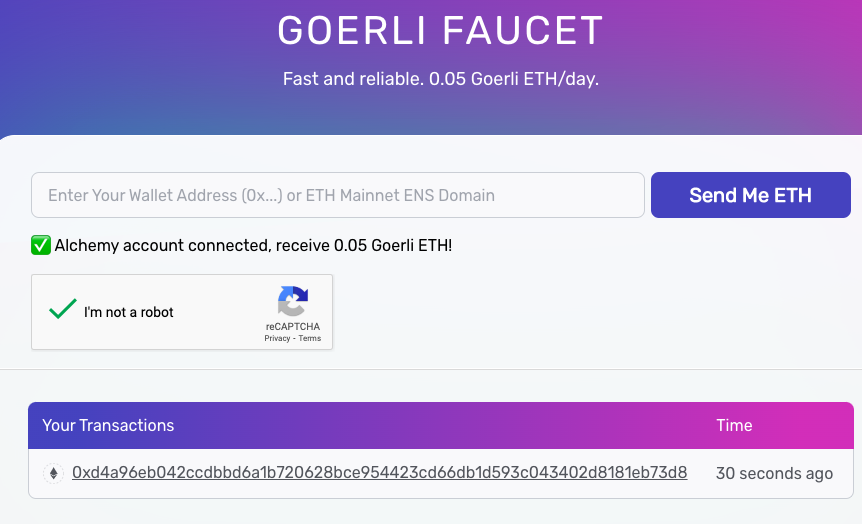
You can confirm you received your test tokens.
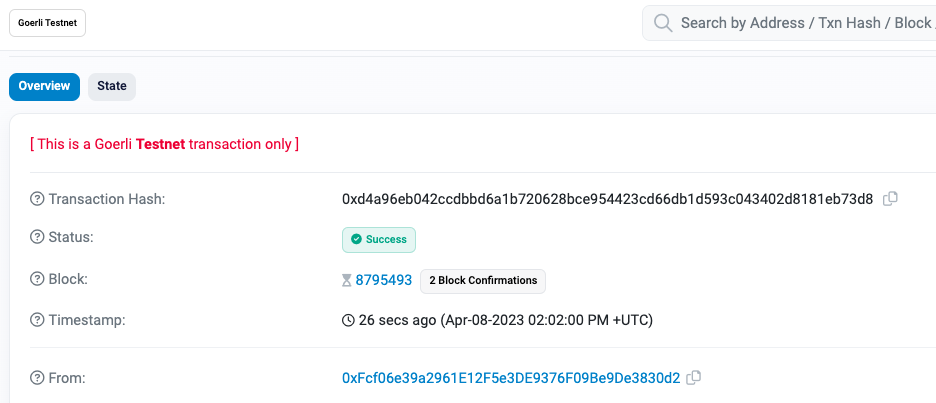
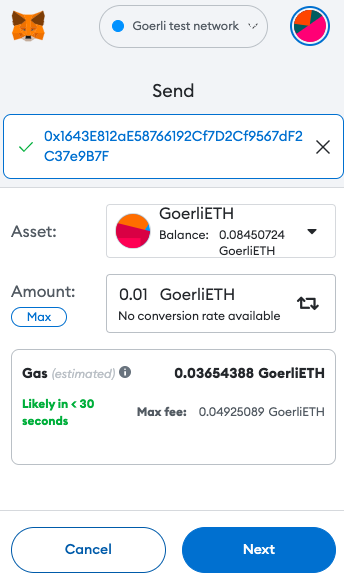
- In your wallet click Import tokens.
- Paste 0x1643E812aE58766192Cf7D2Cf9567dF2C37e9B7F
- Click Add custom token and then Import tokens.
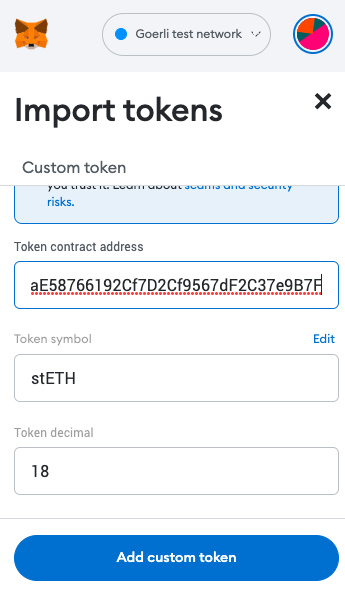

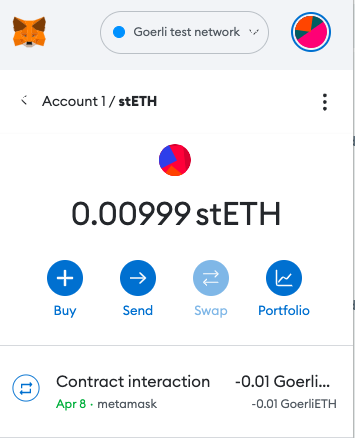
- Go to https://goerli.eigenlayer.xyz/details?token=rETH and connect your wallet.
- Choose an amount and click Next to Approve the transactions.
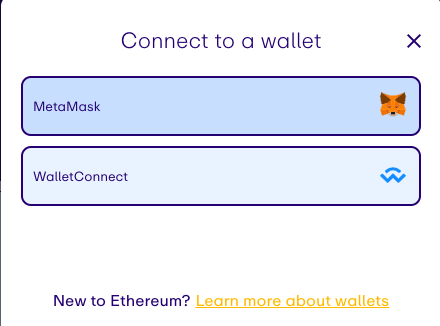

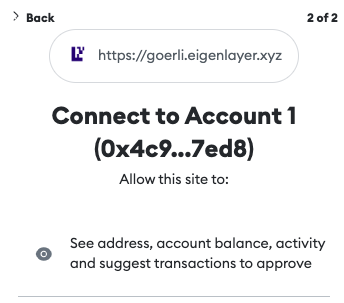
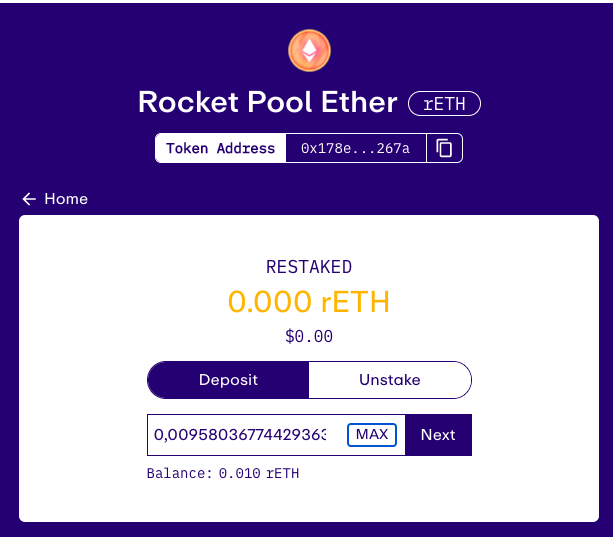
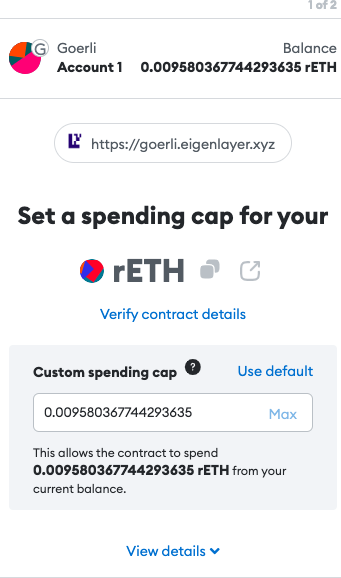
Set your spending cap.
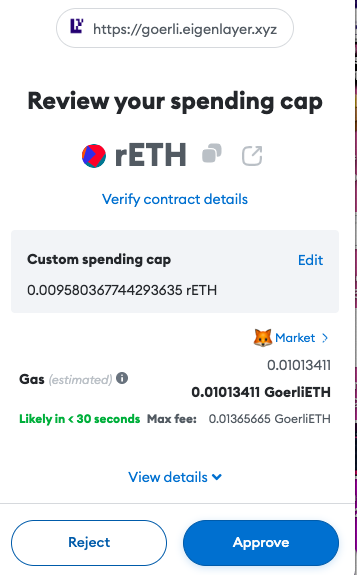

Pay the associated gas fees.


Confirm the deposit success on Etherscan.
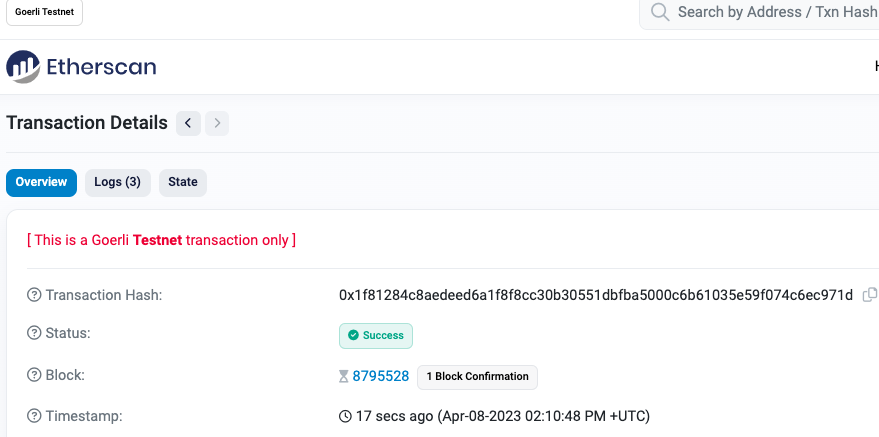
You can also see on the dashboard that the ETH has been restaked.
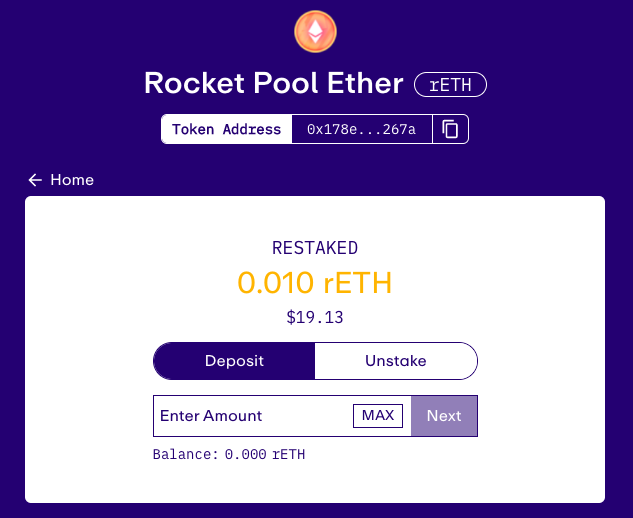
EigenLayer grants developers entry to the staked capital base and decentralized validator set of Ethereum. This connection to the trust network enables the realization of mechanism designs that were previously unattainable.





